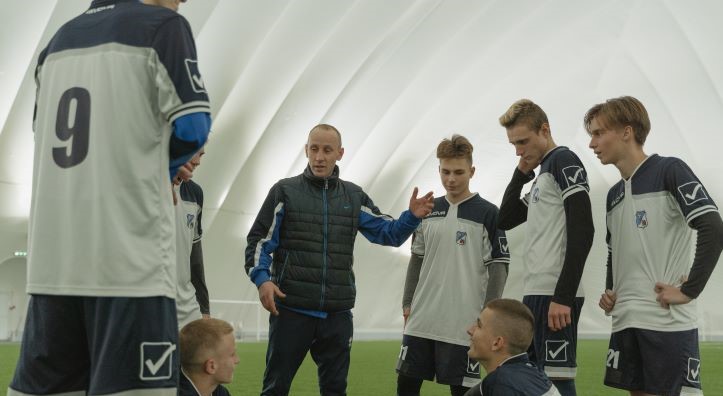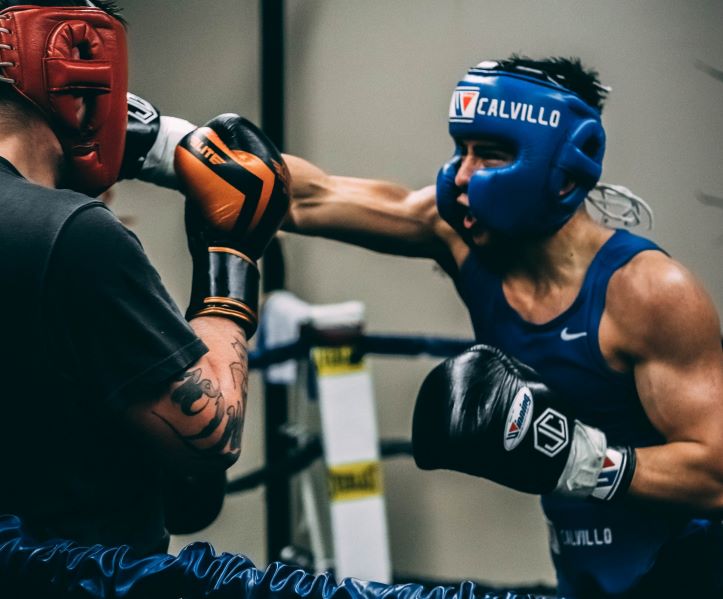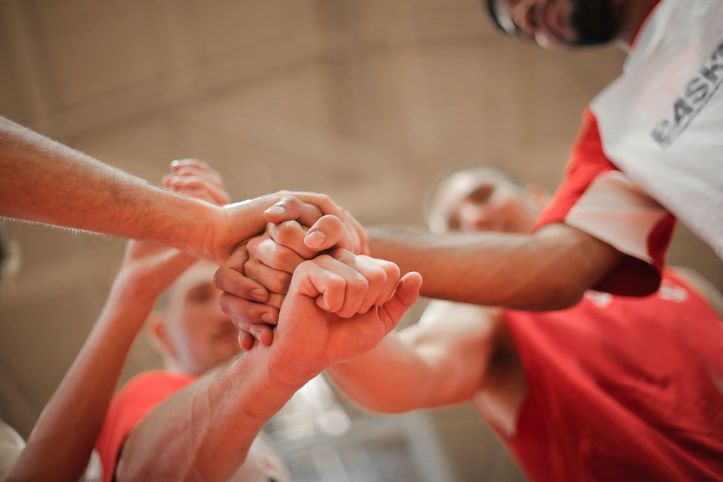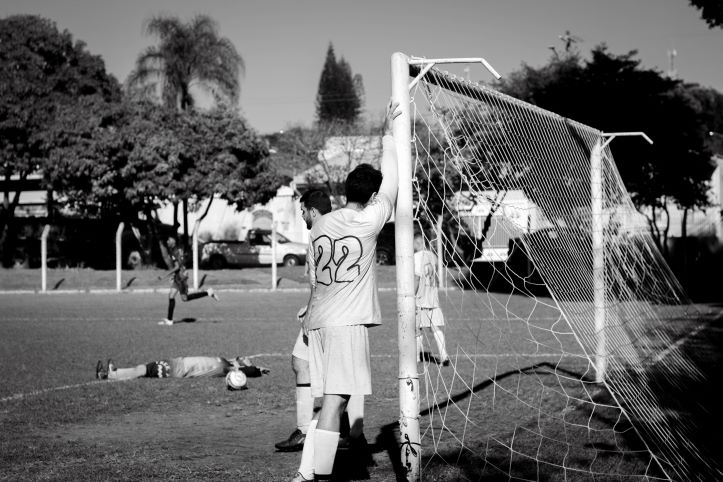Motivating a lazy athlete means understanding the obstacles an athlete faces, providing a nurturing environment, setting achievable goals, appreciating their dedication, and put their health first.
It shouldn’t be so hard to get a lazy athlete to work out. Some tactics will save you from asking how to motivate a lazy athlete.
Coaches, teammates, and parents all battle with inactive athletes. But this challenge presents an opportunity to find creative ways to revive their excitement.
As you go through this article, you’ll learn how to ignite that spark. Lethargy will be transformed into energy that boosts performance and sports. If you want to overcome obstacles, read on!
Best 8 Strategies on How to Motivate a Lazy Athlete
Understand the Mindset of a Reluctant Athlete
The apathetic athlete may be bored, insecure, or pressured. Motivating today’s youth does not mean, constant saying the “You can do it” thing. The first thing is understanding their mindset. Follow these factors to find out:
The Boredom Factor:
Sometimes, the routine can feel like a loop of déjà vu. It drains the excitement out of every practice. It’s possible for familiarity to lead to disdain, which is when humans start to yawn.
Battling against the Self-Doubt Demon:
Self-doubt can be a formidable opponent, even for the most talented athletes. “Am I good enough?” That voice inside their head. It might be casting doubts bigger than a looming thunderstorm.
External Pressures:
The weight of the world can be too much for them to carry. Like coaches’ demands, parents’ hopes, and the memory of past successes.
✔ Here’s the simple solution: “Empathy and Communication.” It’s as simple as that. Imagine being on their emotional roller coaster with them. Listen to them and understand. Open the door to conversations without judgment. Let them share their frustrations, dreams, and fears with you.

Make Them Set Clear and Attainable Goals
Knowing how to set and achieve goals effectively is very important. Goals are like the North Star. It guides even the most reluctant athlete through the darkest of doubts. They’re like shining lights that show the way to success.
The Spark of Motivation: Goals are like turbochargers for motivation. They give each practice meaning and a goal. No more wondering “Why am I doing this?”
The Commitment Factor: Ever noticed how athletes become more dedicated when a goal is in sight? Their inner warrior rises, and every practice carries them closer to triumph.
Introduce SMART Goals: Goals should be Specific, Measurable, Achievable, Relevant, and Time-bound. Consider them the key to motivating ambiguous objectives.
Specificity Unleashed: It should not be a vague “I want to be better.” It should be “I want to improve my sprint time by 10% in the next two months.” Being precise is like using a laser beam to isolate a target.
Measurability Matters: If you can’t measure it, how do you know you’ve achieved it? We can track progress and feel accomplished with quantifiable goals.
Relevance in the Spotlight: It’s important that the athlete’s goals and the team’s goals are in line with each other. Relevant goals feel like a personal mission, not just another task.
Time-Bound Triumph: The power of deadlines! Time-bound goals add urgency and prevent procrastination.
Tailor Training Regimens for Engagement
Monotony can be a motivation killer. Doing the same drills every day can turn even the most enthusiastic athlete sour. Changing exercises and activities minimizes boredom and keeps things interesting.
Embrace Variety
Combining exercises, challenges, and activities increases excitement. It is like putting colorful sprinkles to a boring cupcake, it becomes more appetizing.
Banish Boredom
Adding variety to the training schedule keeps athletes emotionally and physically engaged. They can’t feel boredom since new difficulties require quick thinking and adaptation.
The Power of Preferences
Training to an athlete’s interests is like creating a soundtrack to their mood. This could involve embracing their favorite sport, practicing a new skill, or enjoying team activities.
Fuel Enthusiasm
Athletes are excited when their preferences are considered. It’s like turning a routine practice into a passion-driven pursuit.
Add Surprise Elements
Add surprise challenges as plot twists in a sports movie. These unexpected moments inject a sense of fun and adventure. An unexpected activity change or friendly competition may keep everyone on balance.
Cultivate a Supportive Environment
For an athlete, cheers, high-fives, and constant encouragement are like a motivational bubble that pushes them to new heights. That’s the magic of a supportive environment.
The Power of Positivity
Imagine arriving to practice to smiles and confidence. A positive support system changes the game, not just your emotions. It boosts confidence and promotes the idea that your team supports you.
Coaches (The Guiding Lights)
Coaches are the architects of this environment. Your words and actions set the tone. Celebrate victories, big and small. Encourage growth with positive remarks. Spread your passion to your athletes.
Teammates (The Motivational Squad)
Athletes are motivated by teammates. Cheer one other on, help each other, and celebrate victories. Your companionship ignites motivation.
Families (The Ultimate Supporters)
The role of families are pivotal. Your support and belief can ignite their path. Attend games, ask about progress, and show interest in their goals. Your constant encouragement inspires.
Effective Communication
Open conversation is important in every situation. Share goals, challenges, and victories. Discuss strategies, address concerns, and find out solutions together. If your athlete is preparing for the Olympics, let them know the importance of Olympic games. Discuss the whole journey with them. Clear communication builds trust and determination in a team.
Build Resilience
Remember, setbacks are a part of any journey. A supportive environment helps athletes recover from falls. Discuss overcoming obstacles and using failures as learning opportunities.

Celebrate Progress and Achievements
A thousand-mile trip is made up of many steps. Think each step as a victory, to be greeted with cheers and smiles. It’s not just about the end goal; it’s also about enjoying the trip. That’s the power of celebrating progress and accomplishments.
There are often many small wins along the way to big goals. These small-but-important achievements deserve their time in the spotlight. Every step forward is a reason to celebrate. Whether you’re getting good at a new skill or beating your own personal best.
Seeing growth is the best way to keep yourself going. An athlete should remember that his efforts matter and his hard work is paying off. A celebration is like getting a high five from the world to let him know he is on the right track.
Idea Spark: Rewards and Acknowledgments
- Goal-Specific Rewards: Tie rewards to specific goals achieved. Give a reward, like a favorite treat or a day off, to the achievement.
- Progress Chart: Create a visual representation of their progress. It’s like a map that shows how far they’ve come. Updating it regularly keeps them motivated.
- Virtual High-Fives: In the digital age, sending a virtual high-five or a congratulatory message can mean the world. It’s a simple gesture that speaks volumes.
- Peer Applause: Teammates can be each other’s cheerleaders. Recognize achievements in team meetings and training sessions. Peer acknowledgment is both motivating and heartwarming.
- Personalized Trophies: Invest in a small trophy or token that signifies their achievements. It’s a tangible reminder of their progress.
- Goal Journals: Encourage athletes to keep a notebook of their accomplishments and feelings. It’s a motivational diary that tracks their journey.
- Creative Challenges: Set up fun challenges that reward progress. It could be a skill-based challenge with a prize for the winner. Friendly competition fuels motivation.
- Progress Parties: Organize small gatherings to celebrate milestones. It could be a pizza night, a movie marathon, or anything that brings the team together.
Foster Intrinsic Motivation
A runner who doesn’t need a finish line to race – they run for the pure joy of it. That’s the essence of intrinsic motivation. An natural motivation to do something because it makes them feel good. Intrinsic motivation comes from enthusiasm and interest in the action, unlike prizes or recognition.
The Long-Term Benefits of Intrinsic Motivation
Intrinsic motivation is long-lasting and beneficial. Athletes fueled by intrinsic motivation are more likely to:
- Stay Committed: The fire that comes from within is less likely to die out. Loving the sport keeps athletes going even when things go tough.
- Seek Mastery: Rather than just finishing, intrinsic motivation promotes mastery. Developing their skills and becoming their best selves is what athletes do.
- Embrace Challenges: Challenges should not be viewed as setbacks but as opportunities for growth. Athletes face challenges because they know the trip is rewarding.

Techniques to Foster Intrinsic Motivation
- Encourage Autonomy: Allow them to make decisions about their training, set their goals, and choose their strategies. They feel ownership and can drive their own advancement with autonomy.
- Emphasizing Mastery: Cultivate a growth mindset that values progress over perfection. Encourage athletes to focus on personal improvement rather than comparing themselves to others.
- Connecting to Purpose: Help athletes understand the real thing. How does their participation contribute to their personal growth, the team’s success, or a cause they care about? Connecting their efforts to a purpose enhances motivation.
- Highlighting Personal Growth: Celebrate not only wins but also personal growth. Whether it’s improving a skill, overcoming a fear, or stepping out of a comfort zone. There is a feeling of accomplishment that comes from recognizing these moments.
- Creating a Supportive Environment: Positive attitudes toward effort, improvement, and passion boost intrinsic motivation. Parents, teammates, and coaches that acknowledge an athlete’s passion are vital.
- Offering Constructive Feedback: Instead of criticism, provide feedback that focuses on progress and effort. Positive feedback motivates improvement.
To learn more about the mind of the athletes, watch this:
Incorporate Mindfulness and Mental Training
An athlete should step onto the field with a clear mind. And should be undistracted by doubts or pressures. This is the power of mindfulness – a practice that enhances focus, resilience, and overall well-being.
Benefits of Mindfulness
Sharper Focus: Mindfulness sharpens the mind’s ability to stay in the present moment. Athletes can focus on their performance without distractions.
Emotional Resilience: By observing thoughts and emotions without judgment, athletes build emotional resilience. They learn to navigate stress, anxiety, and pressure with a sense of calm.
Reduced Performance Anxiety: Mindfulness lessens the grip of performance anxiety. Athletes can confront problems without past failures or future anxieties.
Mental Training
Mental training includes visualization and positive self-talk, techniques that pave the way for confident and resilient athletes.
The Power of Visualization: Athletes mentally rehearse their performance before stepping onto the field. Visualization isn’t just daydreaming; it’s creating a mental blueprint. It enhances muscle memory, confidence, and the ability to handle high-pressure situations.
Harnessing Positive Self-Talk: Athletes can replace self-doubt with a stream of positive affirmations. Practicing positive self-talk is a strategy to silence negativity. It gives them more confidence and sets up to succeed.
Ways to Create Mental Muscles
- Mindful Breathing: Introduce athletes to mindful breathing exercises. This practice calms nerves, enhances focus. Also, improves decision-making under pressure.
- Mindful Awareness: Encourage athletes to be fully present during practice and games. This awareness cultivates a deep connection between mind and body. Which gradually enhances performance.
- Visualization Exercises: Guide athletes through mental rehearsals of their performance. Visualization boosts confidence, whether you’re learning a skill or overcoming a phobia.
- Positive Affirmations: Show athletes how to change their negative thoughts into positive ones. Share knowledge build self-confidence and boost self-esteem. These affirmations bolster self-belief and create a more optimistic mindset.
- Progressive Muscle Relaxation: Introduce progressive muscle relaxation to release physical tension and promote relaxation. A relaxed body supports a focused mind.

Leading by Example
Players’ actions, thoughts, and efforts determine their success. Role models inspire athletes to work hard and achieve goals, and coaches provide information. And assistance to help them overcome obstacles.
Leadership affects more than just what you say, whether you’re a teacher, teammate, or family member. Passionate, dedicated, and growth-minded gamers inspire other players. If you enjoy difficulties, have a growth mindset, and promote positivism, you’re more than a guide.
How do you motivate a lazy team
Motivating a lazy team can be so drastic. But it will not when you know how to inspire a whole team. Here’s how you should do it:
- Ensure each team member understands their role and responsibilities.
- Define achievable targets that inspire and energize the team.
- Recognize and reward individual and team efforts and accomplishments.
- Maintain an open and honest dialogue to address concerns and share feedback.
- Demonstrate a strong work ethic and commitment to motivate others.
- Encourage a sense of camaraderie and shared purpose among team members.
- Ensure everyone is responsible for their contributions and commitments.

The Ebb and Flow of Motivation in Athletes
Firstly, the relentless demands of competitive sports can take a toll on an athlete’s mental and physical well-being.
The constant pressure to perform at their best, maintain peak physical condition, and face fierce competition can lead to burnout.
When athletes are overworked and exhausted, it’s natural for their motivation to wane. Additionally, injuries and setbacks are an inherent part of sports, and these setbacks can be demoralizing.
Dealing with an injury can sideline an athlete. It disrupts their training routine and forces them to confront the uncertainty of recovery. This can be a significant blow to an athlete’s motivation. They may feel like their hard work has been in vain.
Motivation might also fluctuate due to training and competition monotony. Athletes often follow a strict regimen, repeating the same drills and routines day in and day out.
This repetition can lead to boredom and a sense of stagnation. Which causes athletes to lose their enthusiasm. Moreover, external factors such as personal life issues, academic pressures, or social stressors can spill over into an athlete’s mindset. This can make it challenging to stay motivated solely for their sport.
Case studies and success stories
Case Study: Turning a Couch Potato into a Marathon Runner
Background:
Sarah, a 26-year-old aspiring athlete. She had a natural talent for running but struggled with motivation. She would often skip her training sessions, opting for Netflix and snacks instead. Her coach, Mark, faced the challenge of motivating this seemingly lazy athlete to reach her full potential.
Approach:
Mark decided to take a personalized approach to motivate Sarah. He began by understanding her goals, fears, and reasons for lacking motivation. Sarah expressed her desire to become a marathon runner but confessed her fear of failure.
Mark devised a plan to gradually build Sarah’s confidence and motivation:
- Goal Setting: Mark and Sarah set achievable short-term goals, such as running a 5k race within three months. This provided Sarah with a clear target to work toward.
- Accountability: Mark held Sarah accountable for her training sessions. They established a training schedule and regularly reviewed her progress.
- Positive Reinforcement: Mark celebrated Sarah’s small victories and milestones. This boosted her self-esteem. He also encouraged her to keep a training journal to track her improvements.
- Support System: Mark introduced Sarah to a running group where she found like-minded individuals. The camaraderie and shared goals motivated her to stay committed.
- Variety: To combat monotony, Mark diversified Sarah’s training routine. They included different types of workouts and terrain to keep her engaged.
Results:
Over the course of six months, Sarah’s motivation began to soar. She successfully completed her first 5k race and even started training for a half marathon. Her transformation from a couch potato to a dedicated athlete showcased the power of personalized motivation strategies.
The Link Between Motivation and Athlete Burnout
Inspiration is the driving force behind every successful athlete. Athletes often channel their inner drive to attain success. But what happens when this motivation becomes a double-edged sword, potentially leading to burnout? A balance must be maintained to ensure both performance and well-being.
Research into this field has revealed valuable insights. One study by Smith et al. (2015) found that high levels of intrinsic motivation, where athletes engage in sports for the sheer joy of it, were associated with lower burnout rates. In contrast, athletes predominantly driven by external factors. Such as the pursuit of rewards or recognition, were more susceptible to burnout. Developing intrinsic motivation in athletes helps prevent burnout.
Furthermore, Deci and Ryan’s Self-Determination Theory (1985) provides a foundational framework for understanding the role of motivation in athlete burnout. This theory suggests that individuals are most motivated when they perceive their actions as self-determined and aligned with their values and interests. When athletes feel coerced or pressured, their motivation may become extrinsic. It can increase the likelihood of burnout. Thus, it is crucial for coaches and support systems to create an environment that nurtures autonomy, competence, and relatedness, thereby enhancing intrinsic motivation and mitigating burnout risks.
Conclusion
We can say that you now know how to motivate a lazy athlete. You can motivate a lazy athlete with patience, inventiveness, and persistent devotion. Remember that transformation takes time. Be patient, for seeds of enthusiasm you sow today will bloom into triumphs tomorrow. Infuse creativity into your strategies. Not everyone will get the same results from the same solutions.
And above all, commit to their growth. Their victories are yours. Their journey is an embodiment of your dedication. With these virtues as your guide, you’re not just coaching athletes; you’re sculpting champions. Onward to a future adorned with successes beyond your imagination!
Also, learn how to motivate a lazy child in sports if you want to inspire your child or siblings.
FAQs
What happens if an athlete has no motivation?
Lacking motivation can hurt an athlete’s growth and performance. They might find it hard to set and reach their goals, miss workouts, and not reach their full potential in the end. Because motivation is what drives people to be dedicated and work hard in sports.
What is a motivator in sport?
Something that inspires and drives players to reach their goals and do their best is called a motivator in sports. Some of these are wanting to win, getting better as a person, having the support of friends and coaches, and just loving the sport. Motivators are different for each person and can come from inside or outside the person.
What is athlete depression?
Athletes can have depression, which can show up as low self-esteem, risky behavior, or too much worry or fear. It can affect their performance and overall well-being.
How do Olympic athletes stay motivated
Olympic athletes sustain motivation by setting clear goals, drawing from intrinsic passion, and building resilience in the face of challenges. They also rely on support systems and maintain life balance to fuel their competitive spirit.
How can I help my athlete mentally?
Support your athlete’s mental health by fostering open communication, providing positive feedback, and teaching coping strategies for stress and setbacks. In special cases, provide them with the contact information of a mental health professional.
How do you encourage a struggling athlete?
By appreciating an athlete’s participation and effort can really motivate them. Giving them constructive feedback, practical goal-setting, and targeted training. Offer specific advice to address weaknesses, celebrate small victories.
What are 2 ways an athlete can be motivated?
Athletes can be motivated through intrinsic and extrinsic factors. Intrinsic motivation comes from within and is driven by a love for the sport, personal growth, and the desire to achieve mastery. Extrinsic motivation, on the other hand, is external, such as rewards, recognition, or competition. A combination of both intrinsic and extrinsic motivation can effectively inspire athletes to excel.
How can I encourage my athlete?
To encourage your athlete, offer consistent support and positive feedback. Communicate openly and listen to their concerns. Set achievable goals together and celebrate their achievements. Create a nurturing and challenging training environment that fosters growth. Provide opportunities for self-reflection and improvement. Be a source of inspiration by sharing motivational stories and leading by example.
What are 3 methods to motivate the unmotivated?
Three effective methods to motivate the unmotivated are:
Goal Setting: Collaboratively set specific, measurable, and achievable goals with the individual or team. Break these goals into smaller milestones to track progress and provide a sense of accomplishment.
Positive Reinforcement: Reward and acknowledge effort and improvement, even when small. Use praise, recognition, and incentives to boost motivation.
Personalization: Tailor your coaching and support to each individual’s needs and preferences. Understand their reasons for demotivation and address them individually. Provide mentorship and guidance as required.
How do you motivate a weak team member?
Motivating a weak team member involves:
Skill Development: Provide training and resources to improve their skills and confidence.
One-on-One Support: Offer individual coaching and mentorship to address weaknesses and challenges.
Positive Feedback: Encourage and praise their progress and efforts. Focus on their strengths as well.
Inclusion: Ensure they feel valued and included within the team, fostering a sense of belonging and motivation to contribute.








